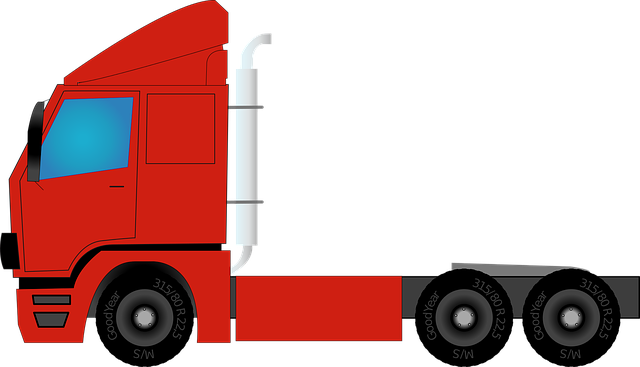Registering Your Car in California: Step-by-Step Guide with DMV VIN Verification
Registering a car in California involves understanding state requirements and gathering essential documents. This comprehensive guide walks you through the process, from preparing necessary paperwork…….

Registering a car in California involves understanding state requirements and gathering essential documents. This comprehensive guide walks you through the process, from preparing necessary paperwork like proof of insurance and ownership, to visiting your local DMV office or utilizing online services for convenient registration. We’ll detail completing applications, providing vehicle information, paying fees, and receiving your plates. Plus, learn about crucial steps like dmv VIN verification for a smooth car registration experience in California.
- Understand California Car Registration Requirements
- Gather Necessary Documents for Vehicle Registration
- Visit Your Local DMV Office or Use Online Services
- Complete Application and Provide Vehicle Information
- Pay Registration Fees and Receive Your Plate
Understand California Car Registration Requirements

Before registering your car in California, it’s crucial to understand the state’s specific requirements. The California Department of Motor Vehicles (DMV) mandates several steps for new and transferred vehicle registrations, including a thorough verification process. One essential component is the DV (Vehicle Identification Number) or VIN verification, which ensures the authenticity and history of your vehicle. This involves cross-referencing the provided VIN with the manufacturer’s records to confirm its details and condition.
Additionally, California has strict regulations regarding the documentation required for registration. Owners must provide valid identification, proof of insurance, and emissions test results (where applicable). For convenience, many residents opt for mobile VIN verifiers or conduct a vin inspection through specialized services, ensuring a seamless and accurate registration process.
Gather Necessary Documents for Vehicle Registration

Before you start the registration process, it’s crucial to gather all the essential documents for vehicle registration in California. The DMV (Department of Motor Vehicles) requires a comprehensive set of paperwork, which includes proof of ownership, identification, and insurance. One critical step is to undergo a DMV VIN verification, where your vehicle’s unique identifier, the Vehicle Identification Number (VIN), is cross-checked against national databases to ensure its authenticity and history.
For a seamless process, consider using a mobile vin verifier or conducting a mobile vin inspection. These services allow you to complete the initial verification step conveniently, often with just a few details and photos of your vehicle. Having these documents ready not only simplifies registration but also ensures you meet California’s stringent requirements for vehicle ownership.
Visit Your Local DMV Office or Use Online Services

When it comes to registering your car in California, one of the initial steps involves a crucial process known as DMV VIN verification. You have two convenient options to complete this task: visit your local Department of Motor Vehicles (DMV) office or utilize their online services. The former provides a direct and interactive experience, allowing you to submit all necessary documents and undergo the inspection in person, including a vin inspection. Alternatively, the digital platform offers a streamlined approach, where you can initiate the registration process remotely.
Online, you’ll find dedicated forms for car registration that prompt you to enter your Vehicle Identification Number (VIN). This unique identifier plays a pivotal role in identifying your vehicle accurately. Some services even provide the option of a mobile vin verifier or mobile vin verification, making the process quicker and more accessible from the comfort of your home.
Complete Application and Provide Vehicle Information

To register your car in California, the first step is to complete the Application for Title and Registration (DMV Form 46). This form requires detailed information about both you as the owner and your vehicle. You’ll need to provide the Vehicle Identification Number (VIN) for verification purposes. The DMV will use this unique 17-character code to conduct a VIN inspection, ensuring that your car matches the details on record with the manufacturer.
Additionally, be prepared to offer proof of insurance and pay the associated fees. You can also opt for a mobile vin verification or a mobile vin inspection service if you prefer not to visit a DMV office. These services allow you to complete the VIN verification process remotely, saving you time and potentially simplifying the overall registration experience.
Pay Registration Fees and Receive Your Plate

After completing your car’s registration application at the California DMV, it’s time to settle the fees. The amount varies based on the type and age of your vehicle, but you can expect to pay for registration, a title transfer (if applicable), and a vehicle identification number (VIN) verification fee. The VIN is a unique code that identifies your car, and this inspection ensures the accuracy of the details provided during registration. You can opt for a mobile VIN inspection service for added convenience, as these professionals will come to you.
Once your payment is processed, you’ll receive your license plate, which needs to be displayed on your vehicle. This plate serves as a visual verification of your car’s registration status and is crucial for law enforcement and traffic management. Always keep your plates secure and up-to-date to avoid any fines or legal issues while driving in California.
Registering a car in California is a straightforward process that requires understanding local regulations and gathering essential documents. By following these steps, including completing a DMV VIN verification, you can ensure your vehicle complies with state laws. Whether you choose to visit a local DMV office or utilize online services, the goal remains the same: to legally and efficiently register your car, enabling you to hit the road with peace of mind.







